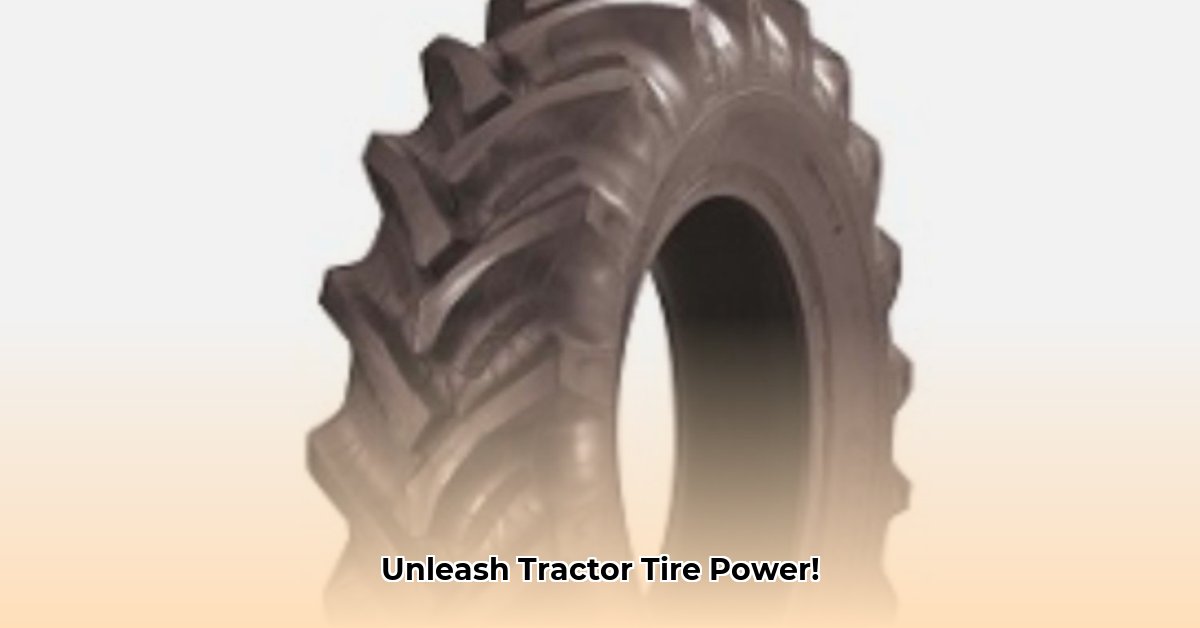
Understanding the BKT TR-171 13.6x26 Tractor Tire
Farmers seeking superior traction, especially in wet and muddy conditions, will find the BKT TR-171 13.6x26 tractor tire a compelling option. This tire's defining characteristic is its significantly deeper tread—25% deeper than standard R-1 tires—resulting in enhanced self-cleaning, improved traction, and superior mud expulsion. But how does this translate to real-world performance? Let's examine the details. For tire size comparisons, use this helpful tractor tire size calculator.
Isn't superior traction in challenging conditions a key factor for maximizing farm productivity and minimizing downtime? The BKT TR-171 addresses this directly.
Technical Specifications: A Detailed Look
The following table summarizes the key specifications of the BKT TR-171 13.6x26:
| Specification | Value |
|---|---|
| Size | 13.6 x 26 |
| Ply Rating | 6-Ply |
| Tire Type | Tube-Type |
| Tread Depth | Significantly deeper than standard R-1 |
| Material Composition | Natural Rubber |
This robust construction, coupled with the natural rubber compound, contributes to the tire's durability and resistance to cuts and tears.
Performance Analysis: Traction, Durability, and Limitations
The deeper tread design of the BKT TR-171 is not merely an aesthetic feature; it delivers tangible performance benefits. The increased depth and optimized groove pattern enhance self-cleaning capabilities, ensuring consistent ground contact even in muddy conditions. This translates directly to improved traction and reduced slippage, potentially leading to fuel savings. The natural rubber compound further contributes to the tire's longevity by resisting cuts and tears.
With a 25% deeper tread, how much improved fuel efficiency can farmers realistically expect? While this question requires further research, the enhanced traction and reduced slippage suggest a potential for fuel savings.
However, it's crucial to acknowledge limitations in currently available data. Comprehensive, independent testing comparing the BKT TR-171 to other 13.6x26 tires is lacking. While the benefits of the deep tread are evident, more research is needed to quantify its long-term performance in terms of wear rate and overall lifespan under various operating conditions.
Market Analysis and Niche Applications
Beyond its intended agricultural use, the BKT TR-171 has unexpectedly found a niche market within mud bogging and swamp buggy racing communities. Its exceptional grip in extreme conditions suggests potential applications in specialized agricultural settings like rice paddy cultivation or swampy terrain. However, further market research is essential to fully understand its market position and potential.
Given its unexpected success in extreme applications, what other specialized agricultural uses could the BKT TR-171 tire effectively serve? This question opens avenues for future research and product development.
Actionable Insights for Key Stakeholders
Several key stakeholders can gain valuable insights from studying the BKT TR-171:
For BKT: Invest in comprehensive independent testing to substantiate performance claims and strengthen the marketing message. This data will also inform future tire designs.
For Dealers: Target regions with frequent wet conditions where the tire's superior traction provides a significant advantage. Educate customers about the tire's unique benefits and the total cost of ownership.
For Farmers: Conduct your own real-world testing in your specific operating conditions and compare the TR-171 to your current tires. Consider total cost of ownership by balancing initial price with expected lifespan and potential downtime reduction.
For Mud Bogging Enthusiasts: Continue utilizing the TR-171 for its extreme grip capabilities and explore potential collaborations with BKT for more specialized tires designed for your specific needs.
Conclusion: A Promising Tire with Room for Growth
The BKT TR-171 13.6x26 presents a compelling combination of deep tread design, natural rubber construction, and superior traction capabilities. While further research is needed to solidify its position against competitors and provide comprehensive long-term performance data, early indications are promising. Its unexpected success in specialized markets highlights its versatility and suggests a significant potential for future innovations built on its foundation. Further studies will refine our understanding of this promising tire's capabilities and its place within the broader agricultural landscape.